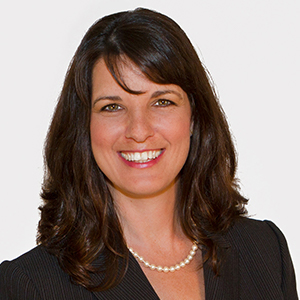Suppose your organization is not achieving a particular goal. First, look at whether you’re measuring the accomplishment of a goal or an objective. What’s the difference? A goal is usually more of a broad, overarching statement of something you want to accomplish, and objectives are typically measurable subsets of that goal. For example, if you want to increase your fundraising income for a particular year, or if your goal is to increase your fundraising income in a given year, you may have some additional objectives underneath that goal. For instance, you may have an objective that is measurable to increase your major gifts income by a certain percentage by the end of the year, or you may have a goal to increase your income from grants by the end of the year. You may have different objectives, but they all need to be measurable in terms of time, income, or percentage. If you’re going to talk about an increase, you want to identify how much of an increase is in a measurable objective and within what time frame. With the goal, it’s more generalized and overarching, and that’s typically what you would share with your supporters or the general public. An objective is something that is measurable that gives you more information about how you are achieving that goal.
Each objective can also be divided up into benchmarks, which gives you smaller chunks of time or volume. If you have an objective to increase the income that you receive from grants by $100,000 within three years, then you may want to create some benchmarks that, within year one, you will increase it by $30,000, and in year two, another $30,000 and in year three 40,000 to get to that $100,000 mark. That’s a way you can incrementally define your goals using measurable objectives and benchmarks, and thus you can really identify where you are achieving your goals and where you are falling short.
The question then becomes, why are you falling short? For instance, has anything changed in your environment? Is that change internal within your organization, or is it external, something that you don’t have any control over but is impacting you? Is that change in your environment permanent or temporary? Internally, you might have lost a key position, which is impacting your ability to achieve your goals. In the case of fundraising, maybe you lost your development director. Is that a permanent loss, or is that a temporary loss?
Another reason why you might not have accomplished your goal could be that the strategy is flawed, and so if you realize that that is the reason, there are things you can do about it. Once you determine why you haven’t achieved your goal, you can think about course corrections. Decide whether the failure to achieve the goal was overly ambitious or no longer relevant because of unanticipated changes. Once you know the reason, you can decide how you’re going to course correct. You can resize your overly ambitious goal, or you can change the strategy or multiple strategies that you are using.
So how do you save face? If you were measuring progress on the achievement of strategic goals, you’d hopefully know early on that you’re not making progress, and you don’t really need to worry about saving face too much. If you’re using benchmarks, then you probably know early on, and you can course correct before it becomes a big issue with your supporters or the general public. However, if you are not making those incremental measurements and you don’t realize it until it’s too late and your supporters are going to know about this, there are some things that you can do. First, you can promote the accomplishments that were realized and be celebratory about those. You can share your barriers to achieving success with your leaders and ask for their help in removing them. You can share your challenges with supporters and let them know how they can help, and then you can also share the next steps with all your stakeholders and let them know how you plan to proceed.
Remember, from failures, you learn, you adapt, and you refine how you do things. It is so important that you’re not afraid to innovate. Go out there, innovate, and do the very best that you can with the resources they have, but definitely try new things and measure, measure, measure! Use data to help you understand whether or not you’re making the progress you hoped for. Keep dreaming big and going for it.


